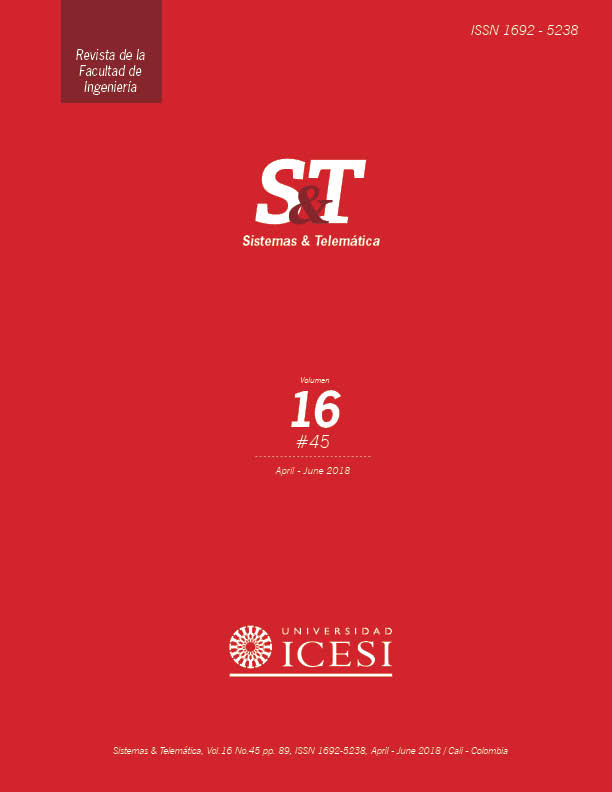Implementation of an OBD-II diagnostics tool over CAN-BUS with Arduino
DOI:
https://doi.org/10.18046/syt.v16i45.2747Keywords:
OBD-II; CAN; Arduino; ECU.Abstract
Since its beginnings, the goal of On Board Diagnostics [OBD] standard has been to take control over gasses emission in automotives and its effects in the environment. This project implements a system based on OBD-II diagnostic protocol over a CAN bus, which allows both, displaying real time variables and diagnostic the vehicle status to get codes about its functioning, failures and energy efficiency. On board diagnostic systems allow to obtain failure codes stored and several relevant variables as: speed, gas level and CO2 emission levels, in real time. An OBD-II system centered at the end of the bus, corresponding to the scanner or diagnostic unit, was implemented on an Arduino Mega 2560 board connected to a CAN transceiver-controller composite module. The scanner has a USB connection that makes it easy to view the data recovered in a versatile way on a PC through a graphical interface created in LabVIEW ™.
References
CanOBD2® Diagnostic Tool™Part#3100e: OBD2 Diagnostic Tool™. (2017). Retrieved from: https://www.innova.com/en-US/Product/Detail/3100e
Cervantes, A. & Espinosa, S. (2010). Escáner automotriz de pantalla táctil [tesis]. Instituto Politécnico Nacional: México.
García, A. (2015). Diseño de una red CAN bus con Arduino [tesis]. Universidad Politécnica de Navarra: Pamplona, España.
Getting Started with Arduino and Genuino UNO. (2016). Retrieved from: https://www.arduino.cc/en/Guide/ArduinoUno
ISO 9141-2:1994 - Road vehicles — Diagnostic systems — Part 2: CARB requirements for interchange of digital information. Geneva, Switzerland: ISO
ISO 14230-2:2016 - Road vehicles — Diagnostic communication over K-Line (DoK-Line) — Part 2: Data link layer. Geneva, Switzerland: ISO
ISO 15765-4:2016 - Road vehicles: Diagnostics on Controller Area Network (CAN). Part 4: Requirements for emission-related systems. Geneva, Switzerland: ISO
McCord, K. (2011). Automotive diagnostic systems. North Branch, MN: CarTech.
Meseguer, J. E. (2013). Caracterización de los estilos de conducción mediante smartphones, dispositivos OBD-II y redes neuronales [tesis de maestría]. Universidad Politécnica de Valencia: España.
Rayo M. O. (2009). Diseño y realización de un sistema on board diagnostics (OBD-II) [trabajo de final de curso]. Universidad Politécnica de Cataluña: Barcelona, España.
Shield introduction. (n.d)Retrieved from: http://wiki.seeed.cc/Shield
Simbaña, W., Caiza, J., Chávez, D., & López, G. (2016). Diseño e implementación de un sistema de monitoreo remoto del motor de un vehículo basado en OBD-II y la plataforma Arduino. Revista Politécnica, 37(1). Retrieved from: http://www.revistapolitecnica.epn.edu.ec/ojs2/index.php/revista_politecnica2/article/view/573/pdf
xTool [Web site]. Retrieved from: www.x-tool.org
Zabler, E. (2002). Los sensores en el automóvil. Stuttgart, Alemania: Robert Bosch GMBH.
Downloads
Published
Issue
Section
License
This journal is licensed under the terms of the CC BY 4.0 licence (https://creativecommons.org/licenses/by/4.0/legalcode).



